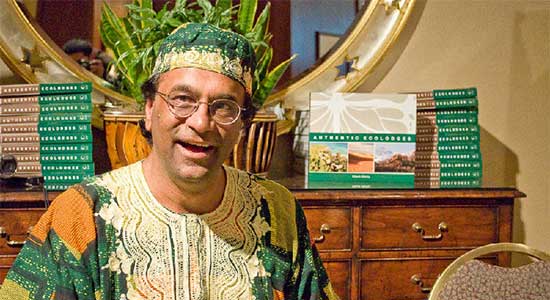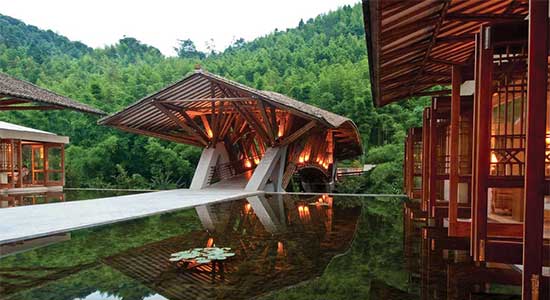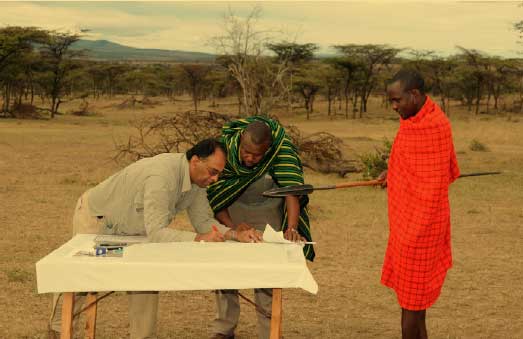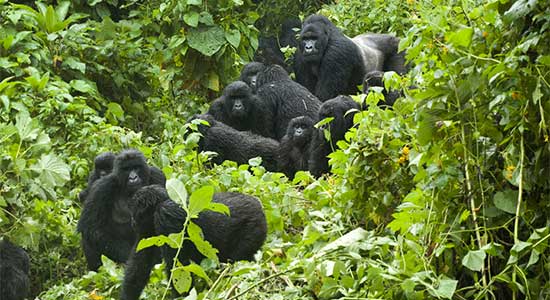BUILDING THE FUTURE
“I am what you would call a holistic contextual designer”, says Hitesh Mehta, founder and president of HM Design, the ‘eco-design’ firm behind resorts such as The Lodge at Chaa Creek in Belize; Volcanoes Safaris lodges in Rwanda and Uganda; and Indonesia’s Nihi Sumba Island, twice voted Travel + Leisure’s number one hotel in the world.

Raised in Kenya by Indian parents, Mehta established HM Design in 1990 whilst he was teaching at the University of Nairobi. The firm began life as a conventional design and architecture practice, but he soon started to notice a disconnect between the architecture of safari lodges and the surrounding landscape.
“I remember asking myself, ‘As landscape architects and planners, are we truly the stewards of the land and oceans, or are we destroyers?’”, Mehta recalls.
He developed “a precocious interest in relationships between landscape, architecture, environmentalism, local community benefits and tourism”, leading to him write “what is considered the first research paper on ecolodges” in 1995.
A sense of place

Now living in Florida, Mehta – a larger-than-life character, tall, with a booming voice – is still brimming with passion for his practice.
Mehta believes that experience and a formal design education are not enough to deliver good eco-design: it “is an approach that needs to come straight from the heart and soul”, he declares. It must be “egoless”. He fiercely describes “greenwashing” developers seeking to “reap rich harvests by touting themselves to be ‘eco’ when they’re not” as the “fish-and-chicken vegetarians of the tourism world”(!).
Projects run by HM Design all have a “quadruple bottom line”, considering financial, social, environmental and spiritual aspects. The first three are simple enough to understand; but what of the fourth element?
“I research the local vernacular forms; local indoor-outdoor relationships; customs; nature and culture patterns; building typologies; and spiritual connections to land”, Mehta clarifies. “After having worked in over 63 countries and in some of the most remote parts of the planet, I have felt that without the fourth aspect – ‘spiritual’ – one cannot attain true sustainability.”
“Every design and plan exude a sense a place”, Mehta continues. “Unlike other architects and landscape architects who can easily be recognised because of a certain style, our designs are a direct response to the respective local context.”
Community empowerment

The empowerment of locals is an essential part of an eco-design project. “When local communities are involved right from the start of the planning process, they begin to take ownership of the project and this ensures sustainability”, Mehta says.
He begins a project with stakeholder planning workshops, where he uses local knowledge to guide the eco-planning and design. Working on the award-winning Crosswaters Ecolodge in Nankun Mountain Reserve, southern China – the first ecolodge and wellness centre in the country – Mehta employed a feng-shui master with 20 years’ experience to help them design the lodge using feng-shui principles.
“Training local workers is a vital component of a successful ecotourism project”, Mehta goes on. The Crosswaters building required the use of locally harvested bamboo (“the most environmentally friendly building material in the world”) and the team were using a new type of technology. They taught the local construction workers the necessary skills, so they could manage the upkeep of the property independently.
Long-term sustainability

Another of Mehta’s projects was creating a sustainable tourism plan for the Virunga Massif, home to the endangered mountain gorillas and eight volcanoes. The main purpose of the project was working out how tourism could benefit locals. “The indigenous people of this area – the Batwa – were involved from day one”, says Mehta.
The Virunga Massif Master Plan helped to protect important ecosystems, whilst creating financial sustainability. “It has particularly helped revive tourism in Rwanda”, Mehta notes, citing examples such as Sabyinyo Lodge, Bisate Lodge and One&Only’s soon-to-open Gorilla’s Nest.
The impact of these projects extends far beyond the finish date. “Eco-design creates resiliency and long-term sustainability, so locals will continue to benefit financially”, says Mehta, speaking not just of the income from tourism, but of water conservation, recycling and the use of alternative energy resources. Aside from providing employment, “an ecolodge is expected to help the local communities with building health clinics, schools and scholarships”, Mehta adds.
All these elements lay a foundation that allows communities to manage tourism on their own terms, to benefit from it, and to offer visitors an authentic experience of their land and culture.
[This article was published in Beyond: Empowered, We Are Africa’s print magazine, in May 2018.]











